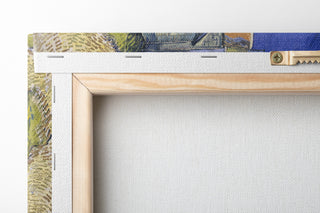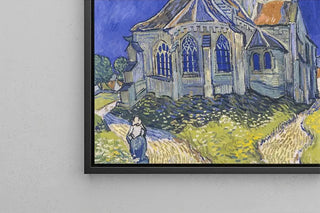Art print La Démolition des Maisons sur le Pont Notre-Dame à Paris - Hubert Robert | Art print


View from behind

Frame (optional)
The Demolition of Houses on the Pont Notre-Dame in Paris: a poignant testimony of urban change. This artwork illustrates a pivotal moment in the history of Paris, where modernity asserts itself against the old. The houses, with their colorful facades and sloped roofs, are depicted in a state of deconstruction, creating an atmosphere that is both melancholic and dynamic. The warm colors of the bricks contrast with the grays of the debris, while the human figures, small in the landscape, add a sense of life to this scene of transformation. The artist's technique captures architectural details with precision, paying homage to a heritage on the verge of disappearing.
Gustave Caillebotte: a pioneer of modern realism. Born in 1848, Caillebotte is often associated with the Impressionist movement, although he developed a unique style that blends realism and innovation. Influenced by his contemporaries, he was able to capture urban life with an almost photographic approach. His artistic career mainly took place in the second half of the 19th century, a period marked by social and technological upheavals. Caillebotte played a key role in promoting Impressionism, while maintaining a sensitivity to details that sets him apart from his peers. His work, including "The Demolition of Houses on the Pont Notre-Dame in Paris," is an emblematic example, demonstrating his commitment to faithful representation of reality.
A decorative acquisition with multiple assets. This art print of "The Demolition of Houses on the Pont Notre-Dame in Paris" is an ideal choice to enrich your interior, whether in a living room, office, or bedroom. Its print quality guarantees remarkable fidelity to the details of the original, allowing full appreciation of Caillebotte's mastery. The aesthetic appeal of this canvas lies in its ability to evoke reflection on the passage of time and the evolution of urban landscapes. By incorporating this artwork into your decor, you give your space a touch of history and culture, while creating an atmosphere that is both elegant and contemplative.

Matte finish

View from behind

Frame (optional)
The Demolition of Houses on the Pont Notre-Dame in Paris: a poignant testimony of urban change. This artwork illustrates a pivotal moment in the history of Paris, where modernity asserts itself against the old. The houses, with their colorful facades and sloped roofs, are depicted in a state of deconstruction, creating an atmosphere that is both melancholic and dynamic. The warm colors of the bricks contrast with the grays of the debris, while the human figures, small in the landscape, add a sense of life to this scene of transformation. The artist's technique captures architectural details with precision, paying homage to a heritage on the verge of disappearing.
Gustave Caillebotte: a pioneer of modern realism. Born in 1848, Caillebotte is often associated with the Impressionist movement, although he developed a unique style that blends realism and innovation. Influenced by his contemporaries, he was able to capture urban life with an almost photographic approach. His artistic career mainly took place in the second half of the 19th century, a period marked by social and technological upheavals. Caillebotte played a key role in promoting Impressionism, while maintaining a sensitivity to details that sets him apart from his peers. His work, including "The Demolition of Houses on the Pont Notre-Dame in Paris," is an emblematic example, demonstrating his commitment to faithful representation of reality.
A decorative acquisition with multiple assets. This art print of "The Demolition of Houses on the Pont Notre-Dame in Paris" is an ideal choice to enrich your interior, whether in a living room, office, or bedroom. Its print quality guarantees remarkable fidelity to the details of the original, allowing full appreciation of Caillebotte's mastery. The aesthetic appeal of this canvas lies in its ability to evoke reflection on the passage of time and the evolution of urban landscapes. By incorporating this artwork into your decor, you give your space a touch of history and culture, while creating an atmosphere that is both elegant and contemplative.
12,34 €






